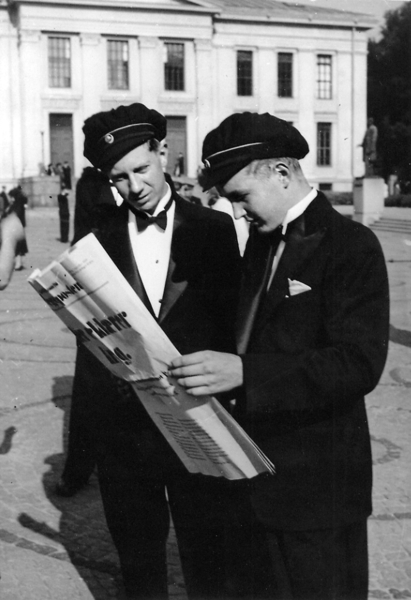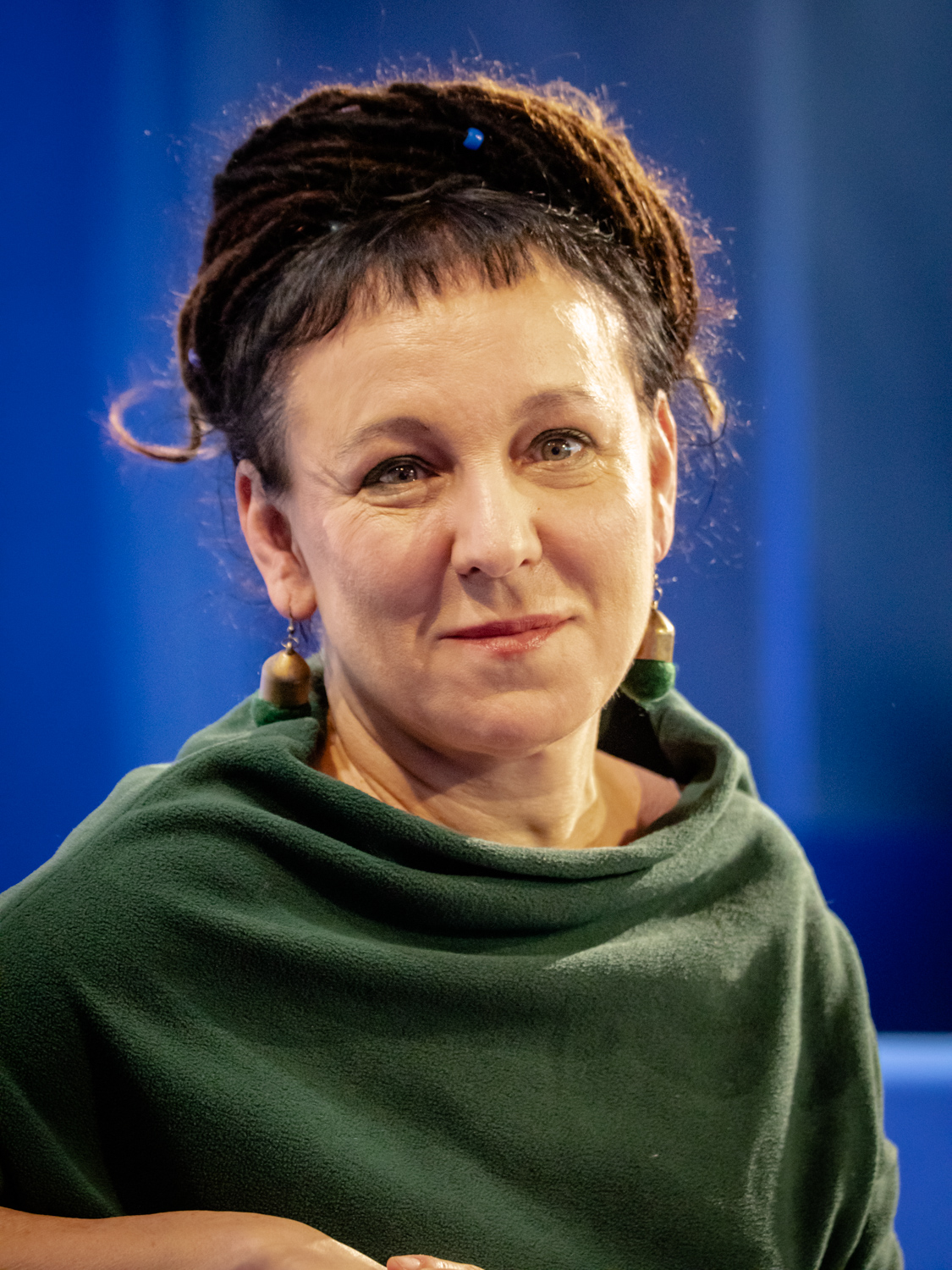Comparative Literature and Decoding the Complexities of the Baltic Sea Region
The concept of ‘narrative’ (as opposed to ‘reality’) is prevalent in the press, particularly with respect to the Russian invasion of Ukraine. The recognition of people creating and recreating themselves via the stories they tell themselves and/or others is universal and nothing new. But literary and psychological analyses can help us understand what is going on in the world today.

The importance of decoding narratives
The term “narrative” has arguably become an even more important tool to describe and analyze reality during the past couple of years because it occurs so frequently in media discourse about one of the biggest contemporary political crises in European history: the Russian invasion of Ukraine. Already before the invasion started, in January 2022, the press in Poland as well as elsewhere had warned about “The Kremlin’s active front” and “seven false narratives about Ukraine”. The day before the invasion, on February 23, The Guardian explained that “Understanding Putin’s narrative about Ukraine is the master key to this crisis”. The concept of (false) narratives became even more actual after February 2022 as creating and spreading confusing stories about Ukraine became a part of the Russian war machine. This led to a greater need for informing the general public of the challenges this presents, and a range of articles published articles with tips on recognizing “...false narratives about the war in Ukraine”, or deeper analysis on true and false narratives about the topic. The term “narrative” (as in ‘not real’) has thus become a significant part of our everyday lives, something we are being forced to relate to.
Nordic gaze on central and Eastern Europe
Working out what is a ‘narrative’ and what is ‘reality’ seems particularly important and relevant in the Baltic Sea region today, with all of its current geopolitical challenges, the war in Ukraine, the refugee crisis along the Polish and Lithuanian borders, and the general difficulties democratic societies face.
As a literary scholar working with the latest Norwegian literature, I use narrative identification and deconstruction in reading Nordic literary texts, for example, when they create (often exoticized) images of Central and Eastern Europe. Examples of contemporary Norwegian literature that has done this include: Mikkel Vika’s Alle vil til Auschwitz (Everyone wants to go to Auschwitz); Jørn Lier Horst’s Vinterlukket (Closed for Winter); and Lars Saabye Christensen’s Modellen (The Model). Unravelling narratives that are based on prejudice and preconceptions can lead to a better understanding Central and Eastern Europe. (See for example Drozdowska 2021 for more on this.)

Analysis of narratives within literary studies
Analyses within literary studies may seem irrelevant as it is to do with fiction. But the media focus on narratives shows that what scholars have been discussing for centuries is important: We organize our lives into stories, as individuals, but also as societies.
In her keynote lecture at the conference Study Conference of Scandinavian Studies (Arbeitstagung der Skandinavistik) in Munich in September 2022, the literary scholar professor Unni Langås presented a "national basic narrative” about the Second World War in Norway. She argued it was a series of chronologically organized events, composing a story of how the war happened, distinguishing the protagonists from the antagonists. The narrative is crucial for the Norwegian understanding of these historical events, both sociologically, but also regarding the representations of the war in literature (the topic that interests her the most as she is a literary scholar working with the theories around postmemory).
The Polish Nobel Prize winner Olga Tokarczuk published her novel, Empuzjon (Empusion), in 2022, the same year “narrative” became an extremely actual concept in the media discourse. In it, she speculates over people’s ‘fictions’:
People have their fictions and believe what they have agreed upon with themselves. You know, it doesn’t have to be true that things are only this or that. It just helps to navigate, in practice, tuberculosis or syphilis, one or the other, but you know best that most of our experience is not subjected to such simple divisions. [...] I encourage you to create your own fiction, for example such that it is you who is perfect. (Tokarczuk 2022, author’s translation)
Empuzjon is based on – and consciously plays with – another story, the classical novel The Magic Mountain by Thomas Mann (1924). There are different levels of narrative – an explicit one, where characters in the book discuss fictions with the protagonist, and a more implicit meta-narrative, where the story created by Tokarczuk takes on, redefines and builds upon the classical Thomas Mann text. The interplay between these two texts – and no doubt many others – is referred to as intertextuality in literary studies.
Julia Kristeva coined the concept of intertextuality in her 1966 book "Word, Dialogue and Novel". It refers to the dialogue or interconnectedness (originally) between texts and (later) other media, which leads to a more complex telling to the reader or recipient of the message.
Narratives build and feed off each other
Jerome Bruner’s article “The Narrative Construction of Reality” can help us understand what narratives are and how they work. The article was published in 1991, another year of great changes in Europe and the world when a redefinition of the stories we tell ourselves and others became very important. Bruner (1915–2016) was a psychologist, but his concept of narratives can be applied in an interdisciplinary way to literary studies, but also history, political sciences, culture studies, international relations, anthropology, and many more. The questions he poses in the text are universal with regards to both time and space, and can be defined as a natural part of the process of trying to understand the basic rules of the human existence, such as:
- How do we perceive, learn about and “construct” reality?
- What set of “cultural tool kits” do we use in the process?, and:
- Do different cultures perceive the world differently?
Bruner argues that we, as humans, have a natural tendency to organize our experiences into stories that are then told and retold. He writes, “As I have argued extensively elsewhere, we organize our experience and our memory of human happenings mainly in the form of narrative – stories, excuses, myths, reasons for doing and not doing, and so on. Narrative is a conventional form, transmitted culturally and constrained by each individual’s level of mastery […].” (page 4) Regardless of what type of narrative we are talking about – individual or collective, used in literary, sociological or historical context, explicit or implicit, Bruner argues that there are ten features – or categories – that can be defined and used in order to analyze narratives (Narrative diachronicity, Particularity, Intentional state entailment, Hermeneutic composability, Canonicity and breach, Referentiality, Genericness, Normativeness, Context sensitivity and negotiability and Narrative accrual). They may all be used in order to critically approach or even deconstruct (false) narratives, identifying and defining them as such. But it is the last, tenth feature Bruner mentions that seems particularly interesting here: narrative accrual, the idea that narratives build and feed upon each other: “Culture always reconstitutes itself by swallowing its own narrative tail” (page 19).
This all opens up a discussion about the cultural and sociological tissue that constitutes societies – not very unlike Julia Kristeva’s concept of intertextuality, but in a broader sense. Perceiving the world through such a lens may lead to the conclusion that everything is connected with everything else, creating a continuous and coherent whole. This sort of awareness helps people to decide what lies behind narratives and therefore decode what is ‘real’ and what is ‘narrative’, that is, manufactured with a certain agenda.
Note: All references to Polish literature in this article were translated from Polish by the author.
Further reading:
- Anna Estera Mrozewicz, Beyond Eastern Noir: Reimagining Russia and Eastern Europe in Nordic Cinemas (Edinburgh: Edinburgh University Press, 2018).
- Jerome Bruner, 'The Narrative Construction of Reality', Critical Inquiry 18, 1 (1991), pp. 1-21.
- Karolina Drozdowska, 'The Others from Across the Sea — Eastern Europeans and Eastern Europe in Modern Norwegian Literature', Archiwum Emigracji 28 (2021), pp. 292-305.
- Olga Tokarczuk, Empuzjon (Kraków: Wydawnictwo Literackie, 2022), eBook.
- Sylwia Izabela Schab, Wschodnie tropy zbrodni. O Polsce we współczesnej duńskiej powieści kryminalnej [The Eastern Traces of Crime. On Poland in Modern Danish Crime Novels]. In Maria Sibińska and Hanna Dymel-Trzebiatowska (eds.) Dialogi o kulturze, kultura dialogu [Dialogues abuut Culture, Culture in Dialogue] (Gdańsk: Wydawnictwo Uniwersytetu Gdańskiego, 2018), pp. 251-260.
- Thomas Mann and John E. Woods (trans.), The Magic Mountain (New York: Vintage, 1996).
- Unni Langås, Fremtidsforestillinger i nordisk krigsminnelitteratur [Visions of the future in Nordic war memorial literature] (Lecture delivered at the coferece ATdS 25. Arbeitstagung der Skandinavistik in Munich, 07.09.2022).

